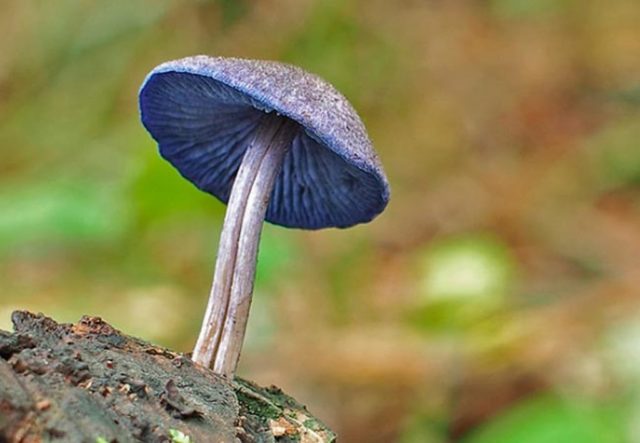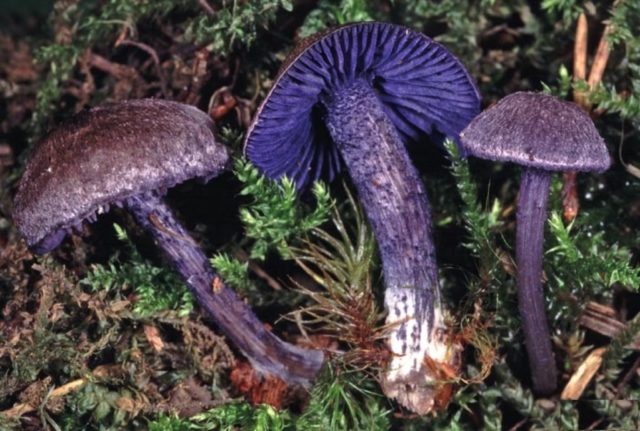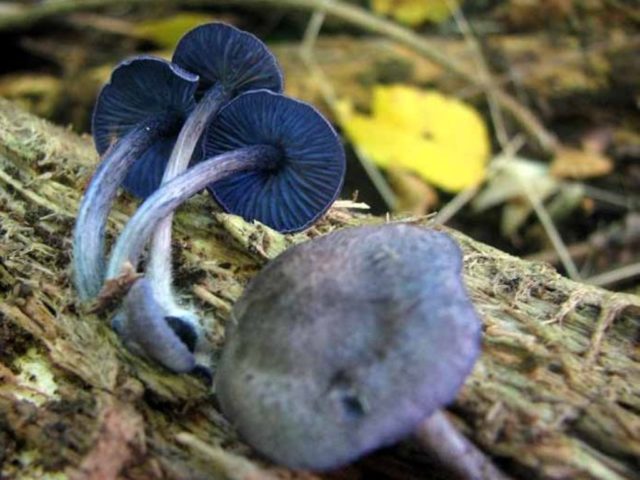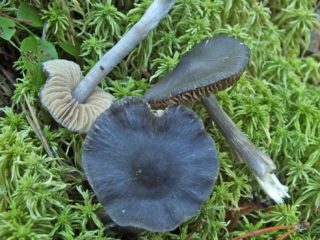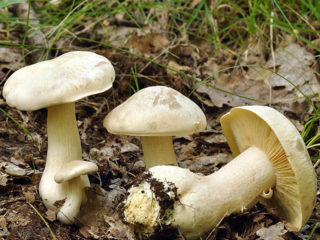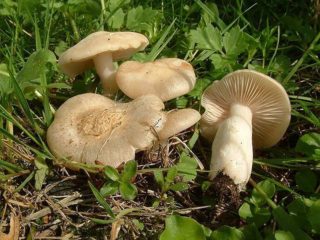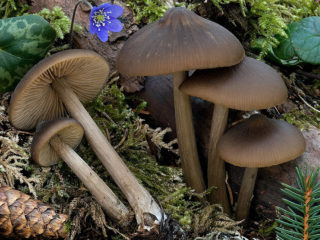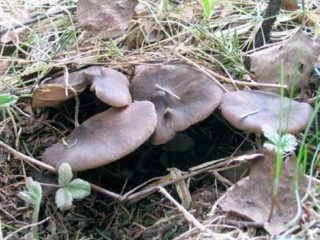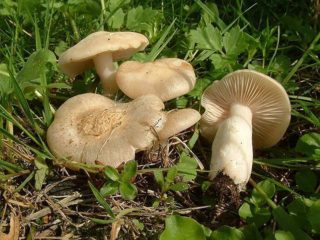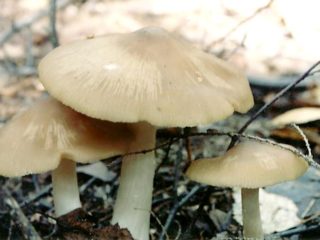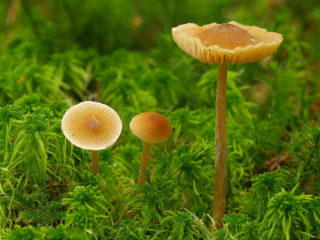Content
Brightly colored entoloma is a rare, inedible species. It grows in deciduous forests, fruiting begins in autumn and lasts until the first frost. This specimen is very easy to recognize, as it has a bright color and small size.
What does Entoloma look like brightly colored
Brightly colored rose leaf is a beautiful mushroom that grows exclusively among deciduous trees. Because of the blue cap and the celestial lamellar layer, it glows in the sun's rays and looks like an unearthly creature.
Description of the hat
The cap is medium in size, up to 40 mm in diameter, covered with a purple skin with pronounced dark spots. At a young age, it has a hemispherical shape, as it grows up, it straightens and becomes darker.
The spore layer is formed by frequent, brittle plates of blue or gray color. Reproduction occurs in angular microscopic spores, which are located in a pink spore powder.
Leg description
The leg is long and thin, reaching 8 cm in height and 2 cm in thickness. It has a curving shape and is colored to match the cap, expands at the base and is colored brown. The fibrous surface is covered with gray or purple scales.
Edible Entoloma brightly colored
This representative of the forest kingdom is considered inedible. Due to its repulsive aroma, soapy taste and tough, fibrous pulp, the mushroom is not used in cooking.
Areas of growth of brightly colored Entoloma
This specimen prefers to grow in small groups among deciduous trees. It starts bearing fruit in regions with a temperate climate from the end of September to the first frost. After the onset of frost, the fruit body acquires a watery structure and dies.
Doubles and their differences
This representative of the forest kingdom, due to its bright appearance, has no edible and poisonous counterparts. It is very difficult to confuse it with others, and when you see a beautiful, purple mushroom, it is better to pass by.
Conclusion
Brightly colored entoloma is a rare representative among the inedible gifts of the forest, growing in regions with a temperate climate. Due to its bright color, the species does not have twins and cannot be confused with edible specimens.
